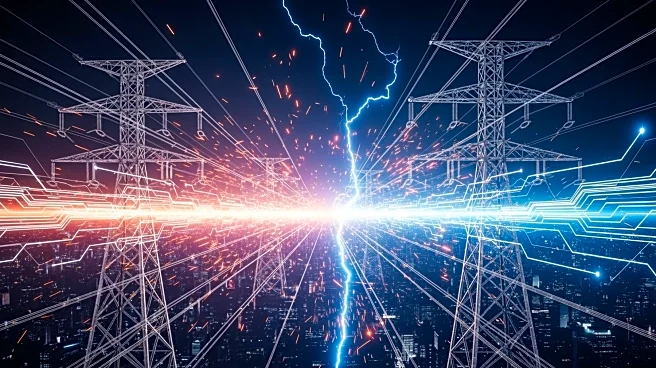What's Happening?
Generative AI models, particularly those used for video creation, are consuming significant amounts of energy, far surpassing the requirements for text and image generation. A study led by Sasha Luccioni
at Hugging Face highlights the energy-intensive nature of AI video models, such as those used by OpenAI's Sora app. These models require substantial computational power, with video generation being 30 times more energy-consuming than image generation and 2,000 times more than text generation. The study utilized the Nvidia H100 SXM GPU to measure the energy demands of creating AI videos, revealing that a single AI video can use approximately 90 Watt-hours. This energy consumption is equivalent to running a 65-inch Samsung OLED TV for 37 minutes. As AI video tools become more popular, the demand on the U.S. electrical grid is expected to increase, prompting discussions on infrastructure improvements.
Why It's Important?
The growing energy demands of AI video models pose significant challenges for the U.S. electrical grid, which may struggle to accommodate future needs. This situation has led to a billion-dollar push for AI infrastructure, with companies like Nvidia investing heavily in AI datacenters. The potential reopening of Three Mile Island by Microsoft and Constellation Energy underscores the urgency of finding solutions to power AI advancements. The environmental impact of AI technologies is becoming a critical issue, with calls for transparency from AI companies regarding their energy consumption. As AI tools become more integrated into daily life, users and companies must consider sustainable practices to mitigate the environmental footprint of these technologies.
What's Next?
The U.S. government and AI companies are exploring various strategies to address the energy demands of AI technologies. Investments in AI infrastructure, such as Nvidia's $100 billion commitment to OpenAI, aim to enhance the capacity of AI datacenters. Additionally, there is a push for more efficient AI systems to reduce energy consumption. Users are encouraged to critically assess their use of AI tools and opt for alternatives when possible. Transparency from AI companies regarding their environmental impact is crucial for informed decision-making by consumers. The development of sustainable AI practices will be essential in balancing technological advancements with environmental considerations.
Beyond the Headlines
The ethical implications of AI's environmental impact are becoming increasingly relevant. As AI technologies proliferate, the need for responsible energy use and sustainable practices is paramount. The lack of transparency from AI companies regarding their energy consumption raises questions about corporate responsibility and consumer rights. The potential reopening of nuclear facilities to power AI advancements highlights the complex interplay between technological progress and environmental stewardship. Long-term shifts in energy policy and infrastructure development may be necessary to accommodate the growing demands of AI technologies while minimizing their ecological footprint.













